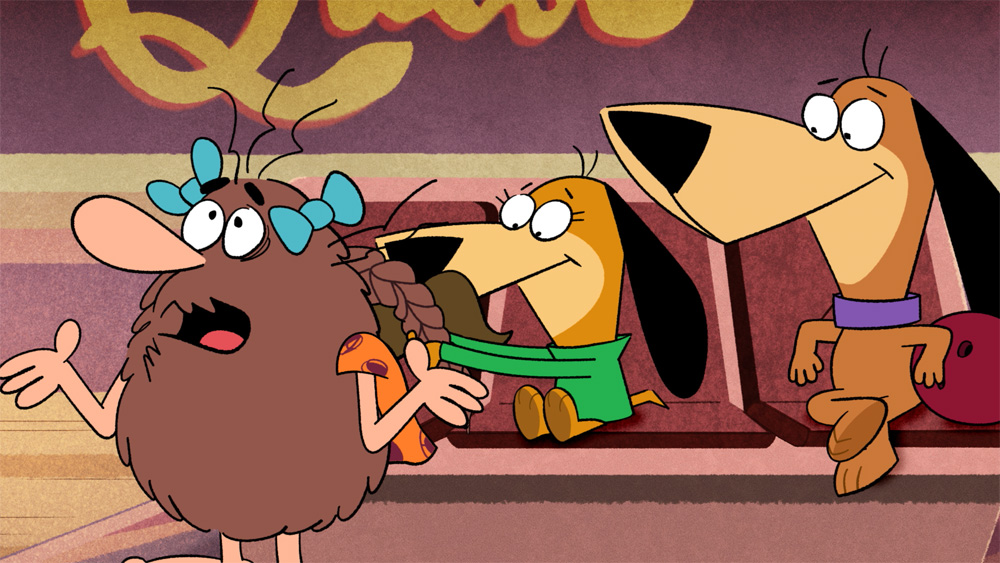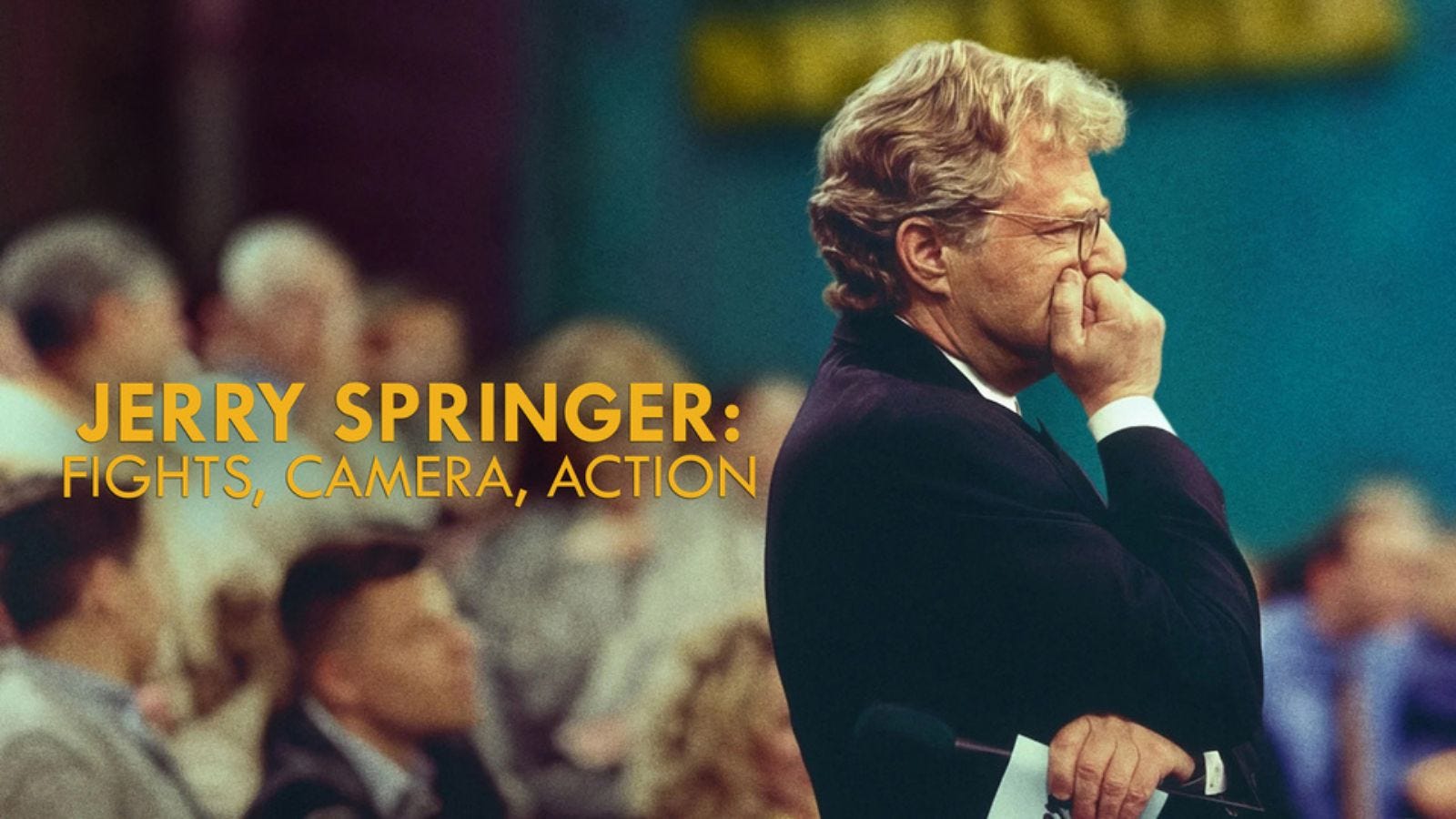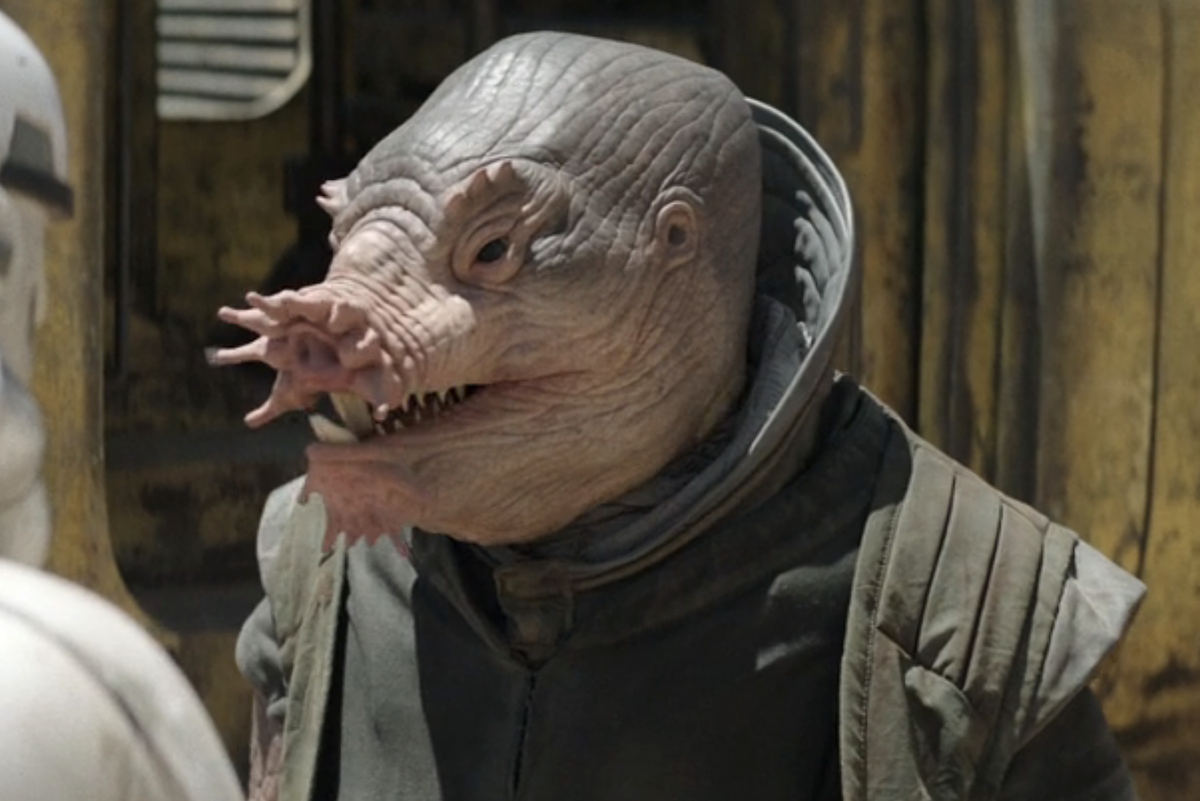Dog and Pony Shows (original) (raw)
Here are my thoughts on three movies and three television shows, with SPOILERS for all of them.

Phantom of the Paradise – Brian De Palma’s campy 1974 rock musical is mostly a take on The Phantom of the Opera, with some elements of Faust and The Picture of Dorian Gray. It features Paul Williams as the unscrupulous record producer Swan, who steals the music for a concerto that composer Winslow Leach wrote about Faust, which is meta-referential to later plot elements. When he tries to confront the producer, Leach gets maimed in a record press and becomes the titular Phantom, threatening Swan until he makes a deal. Leach wants a woman he’s interested in to sing the lead, but Swan instead gives it to a bitchy glam rocker called Beef, presumably as a reference to Meat Loaf. Eventually, Leach finds a videotape of Swan attempting suicide back in the fifties, only to make a deal with the Devil that he’d never age or die as long as the tape remained intact. (I saw it pointed out online that they didn’t have color videotape in the period it was supposedly made, but I guess Satan can do what he wants.) Leach destroys it and they both die. It’s obviously very over-the-top, and wasn’t very successful at the time, but it’s become more popular in hindsight. Maybe it’s better as a look back at the bizarre extravagance of the seventies, which is interesting as the movie starts out with Leach playing piano for a nostalgic doo-wop act, who later reinvent themselves as surf rockers. The sets tend to look big and bright. I didn’t recognize any of the other actors except Williams, but William Finley, who played Leach, had a role in The Funhouse, which we watched last year; Gerrit Graham (Beef) was the voice of Franklin Sherman on The Critic, and Jessica Harper (Phoenix) was in Suspiria, Minority Report, and just recently Nightbitch.

Jellystone! – Hanna-Barbera is known for making cartoons exclusively for television, and they made a lot of them, many based on pretty simple concepts. Most of the early ones are funny animals with one specific shtick, often based on something from pop culture with the voice being a celebrity impersonation. And they reused a lot of the same ideas, like how the popularity of Scooby-Doo (itself largely a response to Dobie Gillis) spawned a whole bunch of cartoons about teenagers solving mysteries with the help of an animal sidekick. They even used the same kinds of animals a lot, as with Yogi Bear, the Hillbilly Bears, the Hair Bear Bunch, and the CB Bears. The first two shows I remember watching with any popularity were Hanna-Barbera, The Flintstones and The Smurfs, although the latter was based on a pre-existing property. Some of the classic characters were revisited in absurd Cartoon Planet shows in the nineties. This show is also absurd, but in a different way. I feel like it focuses on characters and plots, even though they don’t always make sense. It seems somewhat inspired by the newer Mickey Mouse cartoons: it’s over-the-top wacky, the art style is similar, and there are references to fairly obscure characters. It takes place in the town of Jellystone, where most of the characters have jobs. And, since there weren’t that many female characters, a fair number of them are gender swapped. Huckleberry Hound is the mayor, Yogi Bear is (strangely enough) a doctor, Magilla Gorilla owns a boutique with the boy-crazy Jabberjaw and sarcastic Loopy de Loop (both women in this version) as his employees, Snagglepuss hosts TV shows, Quick Draw McGraw doubles as a schoolteacher and superhero, the Hillbilly Bears run a restaurant, Touché Turtle is the police chief, Jonny Quest and Hadji operate a bowling alley, the genie Shazzan does a bunch of different jobs, and Peter Potamus is a mailman, as well as an anime-obsessed dork. Doggie Daddy and Augie, also a girl here, have a co-dependent relationship, and she’s good friends with Yakky Doodle and Shag Rugg.
The town is subject to frequent bizarre disasters, and a lot of the stories center around ridiculous solutions to simple problems, or mundane things made weird.
Daddy dresses Augie up as his friend Dave so he doesn’t have to leave her alone, Cindy Bear turns people into jelly to have time to read for her book club meeting, Huck creates an alternate persona named Raspberry Rover to run against himself, and the kids turn everyone else into babies by turning back the clock tower.
There’s one where Augie goes to get bananas at the grocery store while Daddy holds their place in line, and part of a story Captain Caveman tells involves his banging on a computer keyboard with his club to help Wally Gator find a library book…and it works. One episode visits the detective district, which is permanently in black and white. There’s also a fair amount of gross-out humor, one such episode that comes to mind being the one where Yogi and Boo Boo skip work and hide out in an abandoned amusement park, eating a bunch of moldy old food. This one also comments on the preponderance of teenage sleuths, with Goober and the Ghost Chasers showing up and arguing that they’re better than the Scooby gang. There’s also one where Top Cat sells a bunch of expired fish sticks to the townsfolk, and they all end up with fish heads. The Flintstones don’t actively appear, but Fred and Barney’s voices are heard in an in-universe horror movie, and Fred and Wilma’s skeletons appear to be on display at the bowling alley.
And the Great Gazoo is in one episode, where he lives inside a video game, is destructive, and has a German accent.
The Jetsons appear in a cartoon that largely takes place in the future. I believe we’ve now seen every episode, although there are two others that are supposed to air sometime this year. We’ve also caught up on American Dad!, but I guess I’ll wait until the end of the season to write about that.

Jerry Springer: Fights, Camera, Action – This retrospective on the show largely deals with the behind-the-scenes aspects, and with some of the controversies that arose from the program. I never really watched the show, but Beth did. There is a lot of focus on executive producer Richard Dominick, who wrote for tabloids before starting in television, and was responsible for much of how the show operated. It’s mentioned that Jerry always came across as a really nice guy, and that Oprah would take shots at him when they were in competition for ratings, but not the reverse. There was a lot of tension among the producers, and they discussed one specific incident where a guy killed his ex-wife after watching the episode they both were on. There’s definitely an argument to be made against how the show would encourage conflict and violence, even though they were all based on existing tensions. The issues were real, but the people were coached and their feelings played with for the sake of entertainment. One thing that did strike me was how the Springer audience always booed Nazis and Klan members, and now politicians just openly use their rhetoric.

The Fog – Released in 1980, this was directed by John Carpenter, and I noticed some clear (so not foggy) similarities to Halloween, and not just people getting stabbed. The credits use the same font, the music he wrote is in the same style, and Jamie Lee Curtis is one of the stars. In this film, she plays a hitchhiker who gets a ride from and then hooks up with Tom Atkins, star of Halloween III, although here he’s missing his signature mustache. And his character’s name is Nick Castle, after the first guy who played Michael Myers. Carpenter’s then-wife, Adrienne Barbeau, plays a local radio DJ. And Curtis’ mother Janet Leigh plays the town mayor. The plot involves a seaside California town about to celebrate its centennial when it’s haunted by a mysterious fog that sometimes produces murderers. A priest, Father Malone, discovers a diary by his grandfather that says he and the other town founders purposely caused a ship to run aground, killing six people and taking the money on board. The fog contains the ghosts of these people, who are intent on taking six lives to get revenge. It’s pretty good, and I like how the fog can get pretty much anywhere, and you don’t know when the ghosts are going to emerge. The lighthouse where Barbeau’s character broadcasts her show is called Spivey Point, which made me think of Joe Spivey from the Allan Sherman song. The lighthouse was actually at Reyes Point.

Star Wars: Obi-Wan Kenobi – I understand this was originally planned to be a movie, but after the relative failure of Solo (which apparently means that it made a crapload of money, but not a big enough crapload), they made it a miniseries as well. It has Ewan McGregor reprising his role as the titular character in a story taking place about ten years after Revenge of the Sith. He’s living in hiding on Tatooine, but is asked by Bail Organa to save his daughter Leia, who had been kidnapped by bounty hunters. He reluctantly agrees, and it brings him back into conflict with his old pupil, Darth Vader. I’m curious as to how well this fits with what we know from the original film, as their dialogue on the Death Star suggests they hadn’t seen each other since the battle on Mustafar. On the other hand, Leia does seem to have more familiarity with Obi-Wan than just a vague concept of his being a guy his father knew before she was born. The kidnapping turns out to be a plot by an Inquisitor who hunts Jedi, who is trying to get close to Vader for her own personal reasons. I liked the characterization of young Leia, played by Vivien Lyra Blair. Are there any other Star Wars properties that actually show Alderaan? I also thought that Freck, the friendly Condluran transport driver who proudly supported the Empire because he thought they brought order, was relevant in the modern political climate.
Vader’s voice was provided by a program that used samples of James Earl Jones’s voice to generate speech, and while his voice is iconic, it might have been more respectful to just hire a new voice actor.

My Little Pony: The Movie – This was the 1986 film, which Beth remembers watching at the theater with her mom, but didn’t recall much of what happened. I can see that, as I just watched it, and I don’t remember it that well. It’s cute, but there’s not a whole lot there. I’m not sure why the 2017 movie has the exact same title. The plot involves a wicked witch named Hydia who lives in a volcano near the ponies’ home, and wants to do what she can to stop them from enjoying themselves. She’s assisted by her two questionably competent daughters, and for some reason hates when they call her Mom, instead of by her name. They also think eating ice cream is torture. Anyway, the witches create something called the Smooze, a sort of living goo made up of a lot of individual beings, that destroys things and makes anyone it touches grouchy.
With the help of a powerful but forgetful little wizard called the Moochik, with the voice of Tony Randall, they find out that only the Flutter Ponies can stop the Smooze. They must have been a new type of toy they were trying to promote. Their land is even prettier than the regular ponies’, and they have magical abilities. Also appearing are the Grundles, ugly but friendly little creatures whose homeland had been destroyed by the Smooze years earlier. Their king is voiced by Danny DeVito, who receives top billing even though he doesn’t appear until a significant way through the movie. Megan, the main human character (and I believe the only one to be a toy), shows up to help, accompanied by her two younger siblings who are constantly fighting and making fun of each other. There are a lot of songs, and Beth mistakenly remembered the Sea Pony song being in this. It was actually in Rescue at Midnight Castle.